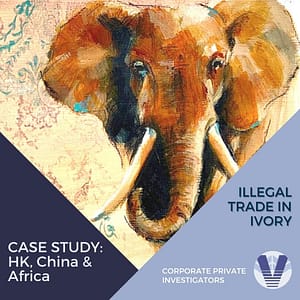
Trade in Ivory: Case Study
What is the trade in ivory? For centuries, traders brought elephant tusks to Hong Kong and China. Craftsmen then carved the ivory into ornate bangles, earrings, statues, and of course, chop sticks. Much took place in Hong Kong.
In January 2018, lawmakers voted to finally end the Hong Kong trade in ivory at the end of 2021. The original worldwide ban on international commercial trade in ivory came into effect in 1989. However, because of various loopholes in the law, the ban actually facilitated the ‘laundering’ of ivory by allowing traders to abuse the system. When they sold an item, they simply replaced it with new ivory, and covered up the sale.
When lawmakers announced the new total ban in January 2018 in Hong Kong, only an estimated 350,000 African elephants remained. There had been 490,000 a decade previously. Poaching for ivory was the primary reason.

